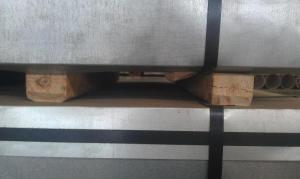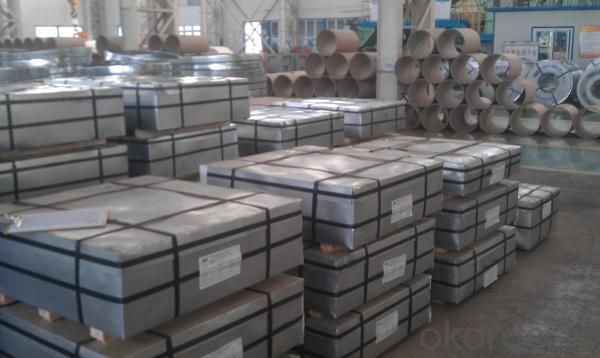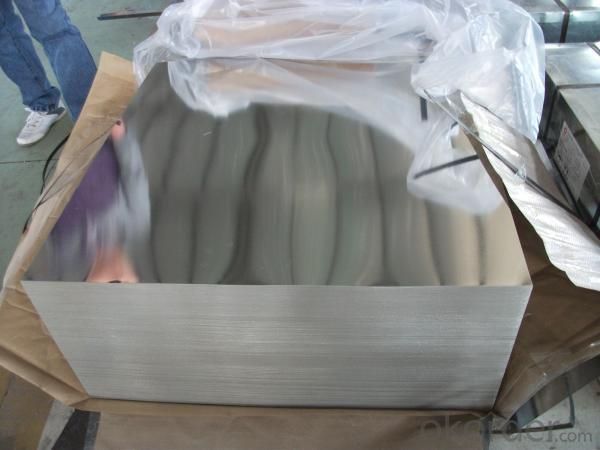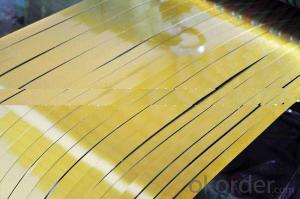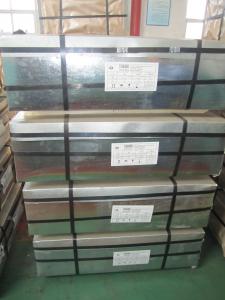Tinplate For Painting Can-CHBB
- Loading Port:
- China Main Port
- Payment Terms:
- TT or L/C
- Min Order Qty:
- 20 Tons~25 Tons m.t.
- Supply Capability:
- 40000 MT Per Month m.t./month
OKorder Service Pledge
OKorder Financial Service
You Might Also Like
General information of Tinplate for Painting Can
|
Steel Type |
SPCC |
|
Temper (BA&CA) |
T1~T5, DR8 |
|
Coating |
2.8~8.4g/m2 |
|
Thickness & Tolerance |
0.15~0.5mm (Tolerance:±0.01mm) |
|
Width & Tolerance |
600~1000 mm(Tolerance: +2/-0mm) |
|
I.D |
508 MM |
|
Coil Weight |
3~10 MT |
|
Passivation |
311 |
|
Oiling |
DOS |
|
Surface Finish |
Bright ,Stone ,Silver ,Matte |
|
Min Order |
25 Tons for 1 20 feet FCL |
|
Package |
Seaworthy Export Standard Wooden Pallet |
|
Standard Available |
GB/T2520-2000, JIS G3303, ASTM A623, BS EN10202 |
|
Lead Time |
35 days after receiving buyer's original L/C or Prepayment |
|
Special specifications are available on customers' requirements. | |
Technical data of Tinplate for Painting Can
|
Chemical Composition(%) |
Mechanical Property |
|
C:0.04~0.06 |
Yield Strength: (Mpa):280~320 |
|
Si:0.01~0.03 |
TensileStrength: (Mpa):340~390 |
|
Mn:0.18~0.22 |
Elongation:20%~30% |
|
P:0.014~0.016 |
------------- |
|
S:0.006~0.009 |
Application of Tinplate for Painting Can

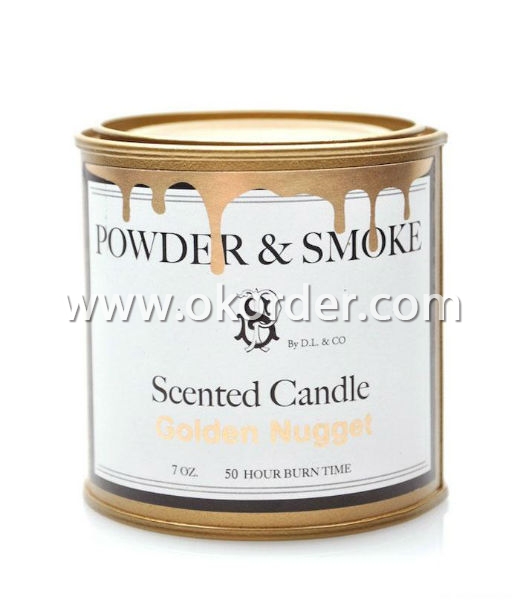
Tinplate is widely used for making all types of containers such as artistic cans, tea cans, painting cans,
chemical package cans and metal printing etc. Its applications are not limited to containers; recently,
tinplate has also been used for making electrical machinery parts and many other products.
Equipment and Facility of Tinplate
Tin Coating Line
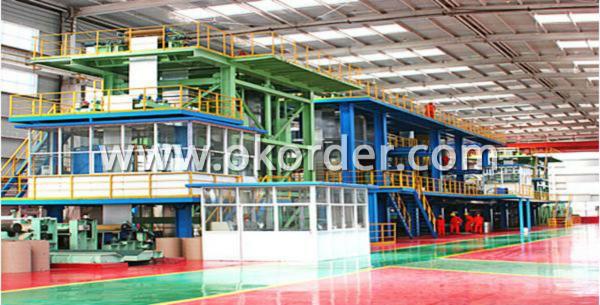
Cold Rolling Mill Batch Annealing Furnaces
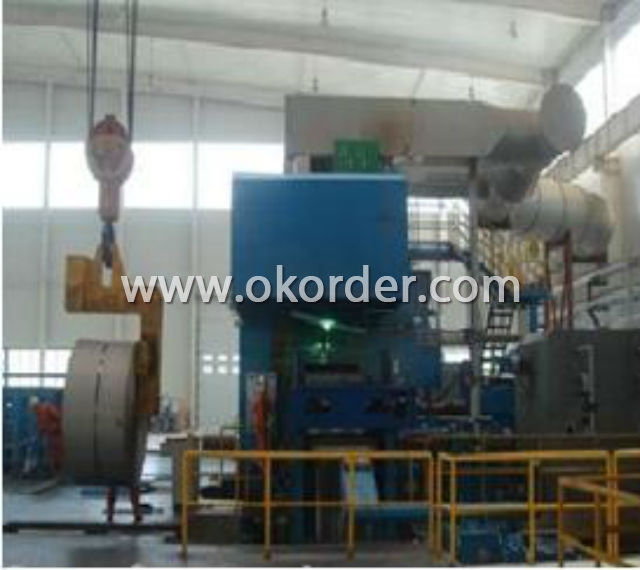

Cutting Line Stock Area
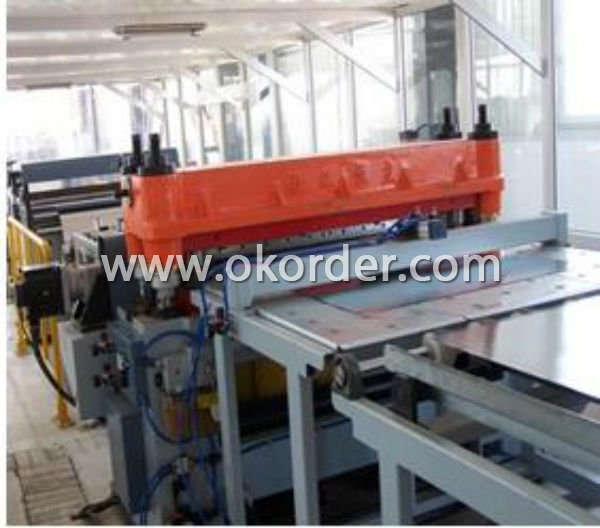

Quantity Control System of Tinplate
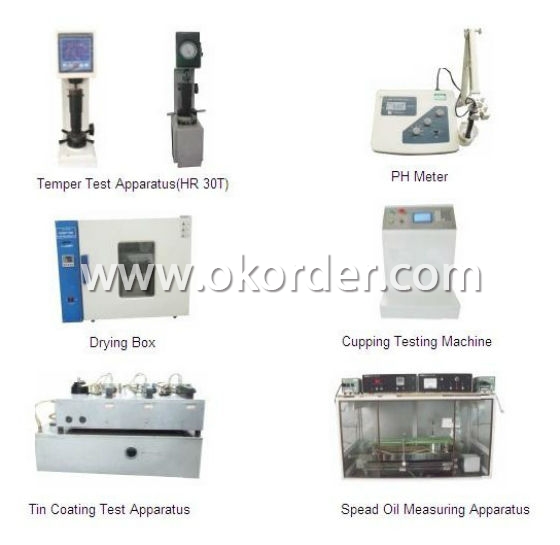
- Q: What are the typical dimensions of tinplate sheets?
- The typical dimensions of tinplate sheets can vary, but they are commonly available in sizes ranging from 0.15mm to 0.35mm in thickness, with widths of 600mm to 1200mm, and lengths ranging from 800mm to 2400mm.
- Q: What are the main properties of tinplate?
- Tinplate is a type of steel coated with a thin layer of tin, providing it with several key properties. It is highly corrosion-resistant, making it suitable for packaging food and beverages. It also has excellent solderability, allowing for easy joining and sealing of tinplate cans. Additionally, tinplate has good formability, enabling it to be shaped into various container forms. Lastly, its aesthetic appeal and the ability to print on its surface make it an ideal choice for attractive packaging designs.
- Q: Can tinplate packaging be used for toy products?
- Yes, tinplate packaging can be used for toy products. Tinplate is a durable and versatile material that provides a protective barrier, making it suitable for packaging various types of toys. Additionally, tinplate can be easily printed on, allowing for attractive and customized designs for toy packaging.
- Q: How does tinplate affect the shelf life of products?
- Tinplate can significantly extend the shelf life of products due to its excellent barrier properties. It acts as a protective layer, preventing oxygen and moisture from reaching the contents of the package. This helps to preserve the quality, flavor, and nutritional value of the products, ultimately extending their shelf life and ensuring they remain fresh for a longer period of time.
- Q: What are the different thickness options for tinplate?
- The different thickness options for tinplate typically range from 0.13mm (0.005 inches) to 0.49mm (0.019 inches), depending on the specific requirements of the application.
- Q: Tin can weldingHow can the side of the column of the pop top be welded or pressed?,
- The cans are divided into two cans and three cans of two. Two piece cans by punching a stamping molding, the iron material, equipment and technology requirements are high, so at present only a few large companies have the production capacity of three cans. Relatively the requirements will be relatively low,
- Q: Can tinplate be used for packaging of flammable liquids?
- Yes, tinplate can be used for packaging of flammable liquids. Tinplate is a durable and corrosion-resistant material that provides a strong barrier against external elements, including flammable liquids. It is commonly used in the packaging of various products, including flammable liquids, due to its ability to withstand the potential hazards associated with these substances.
- Q: How does tinplate compare to aluminum packaging?
- Tinplate and aluminum packaging have their own distinct advantages and disadvantages. Tinplate is known for its superior strength and durability, making it ideal for preserving the contents of cans. It is also corrosion-resistant, providing a longer shelf life for canned products. On the other hand, aluminum packaging offers excellent lightweight properties, making it more convenient for transportation and reducing shipping costs. Additionally, aluminum is a better barrier to moisture, light, and oxygen, ensuring better product protection. Ultimately, the choice between tinplate and aluminum packaging depends on the specific needs and requirements of the product being packaged.
- Q: What are the common safety features for tinplate packaging?
- Common safety features for tinplate packaging include: 1. Tamper-evident seals: These seals are designed to show if a product has been tampered with before opening, ensuring the integrity of the contents. 2. Child-resistant closures: These are mechanisms that require a specific combination of motions or strength to open, preventing young children from accessing potentially harmful substances. 3. Sharp-edge protection: Tinplate packaging is designed to have smooth edges, minimizing the risk of injury during handling and opening. 4. Chemical resistance: Tinplate packaging is often coated with a protective layer to ensure it is resistant to corrosion and chemical reactions, preventing contamination of the product inside. 5. Reclosability: Some tinplate packaging features resealable lids or closures, allowing for multiple uses and maintaining product freshness. 6. UV protection: Tinplate packaging can also be designed to provide UV protection, preventing light-sensitive products from deteriorating due to exposure to sunlight. 7. Stability: Tinplate packaging is typically designed with a sturdy structure, ensuring it can withstand transportation and handling without easily denting or breaking. These safety features aim to protect consumers, prevent accidents, maintain product quality, and comply with regulations in various industries.
- Q: How is tinplate printed and decorated?
- Tinplate is typically printed and decorated through a process called offset printing. In this method, the design is first engraved onto a metal plate, which is then coated with ink. The inked plate transfers the design onto a rubber blanket, which in turn applies the design onto the tinplate. This process allows for high-quality and precise printing on the tinplate surface. Additionally, after printing, various decorative techniques such as embossing, lacquering, or applying special coatings can be used to enhance the appearance and protect the design on the tinplate.
1. Manufacturer Overview
| Location | Hebei,China |
| Year Established | 2009 |
| Annual Output Value | US$2.5 Million - US$5 Million |
| Main Markets | North America South America Eastern Europe Southeast Asia Africa Mid East Eastern Asia Western Europe Central America Northern Europe Southern Europe Domestic Market |
| Company Certifications | ISO9001:2000 |
2. Manufacturer Certificates
| a) Certification Name | |
| Range | |
| Reference | |
| Validity Period |
3. Manufacturer Capability
| a) Trade Capacity | |
| Nearest Port | TIANJIN |
| Export Percentage | 11% - 20% |
| No.of Employees in Trade Department | 6-10 People |
| Language Spoken: | English, Chinese |
| b) Factory Information | |
| Factory Size: | Above 100,000 square meters |
| No. of Production Lines | Above 10 |
| Contract Manufacturing | |
| Product Price Range | Average |
Send your message to us
Tinplate For Painting Can-CHBB
- Loading Port:
- China Main Port
- Payment Terms:
- TT or L/C
- Min Order Qty:
- 20 Tons~25 Tons m.t.
- Supply Capability:
- 40000 MT Per Month m.t./month
OKorder Service Pledge
OKorder Financial Service
Similar products
Hot products
Hot Searches
Related keywords
